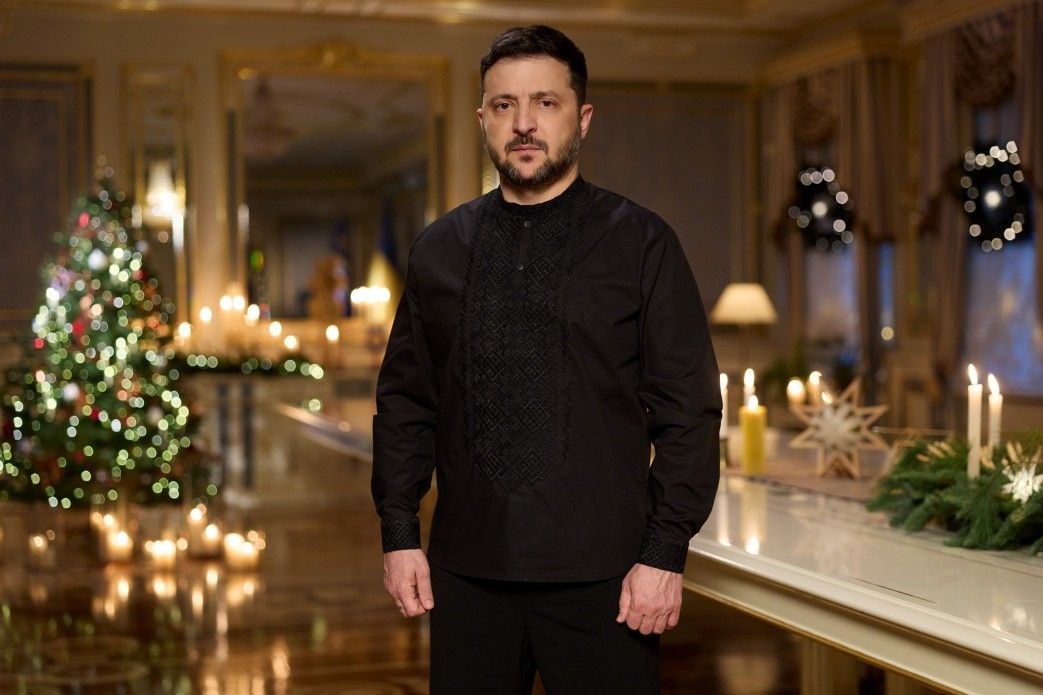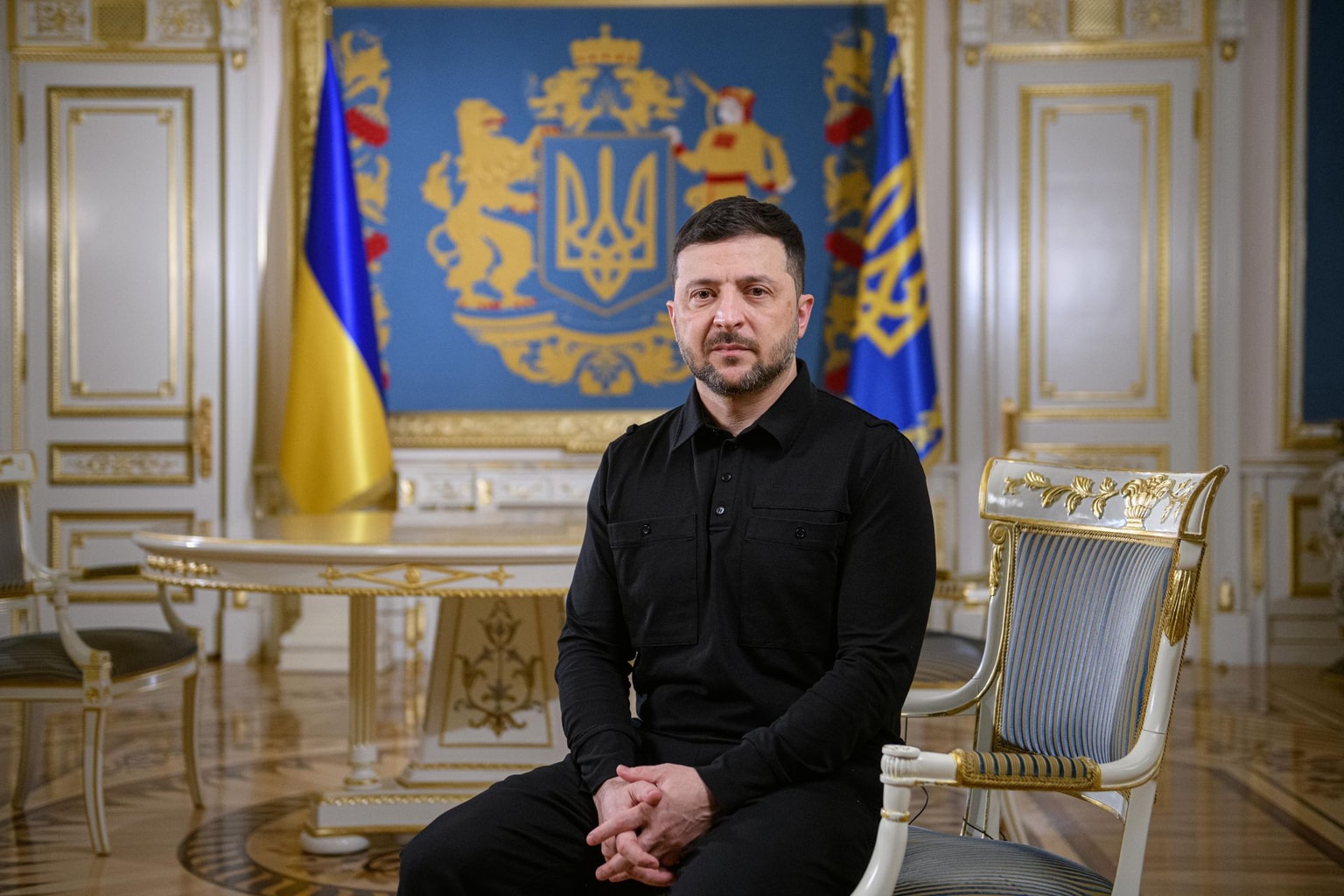
The flaws in Ukraine's new brigades and foreign training programs
Ukraine’s newly formed brigades face devastating losses as poor leadership, inadequate training, and mismatched foreign support hinder their effectiveness on the battlefield.
Recruits from the 108th Separate Mechanized Battalion “Da Vinci Wolves" train to evacuate wounded soldiers during a five-day training session at an outdoor firing range in central Ukraine on March 12, 2024. (Valentyna Polishchuk / Global Images Ukraine via Getty Images)

Serhii Filimonov
Commander of the Ukrainian military's 108th Separate Mechanized Battalion
Newly formed brigades within the Ukrainian military face critical challenges on the front lines. Poor management, lack of experience, and inadequate training have resulted in territorial losses, damaged equipment, and tragic casualties. NATO’s training methods often fail to align with the realities of modern warfare. Despite receiving advanced equipment and personnel, these brigades falter due to weak coordination and leadership.
These units lack a solid command and control “backbone.” Their core comprises reserve officers, officers from non-combat roles, and individuals promoted despite prior underperformance in combat positions.
One of the most striking examples is the 155th Mechanized Brigade. Despite receiving modern equipment, training in France, and near full staffing, the unit’s command lacked experience and an understanding of combat management, organization, and critical support elements, rendering it ineffective. Over 1,700 soldiers have gone AWOL (absent without leave).
These brigades are often redeployed to the front, far from their assigned sectors. After gaining some battlefield experience within “established” brigades, they are stripped of equipment, weapons, and personnel. I know of approximately 10 such brigades operating under these conditions.
Commanders are chosen by military leadership, and Western partners equip these units with advanced weaponry, including armored personnel carriers, infantry fighting vehicles, and tanks. However, most soldiers lack the training to effectively operate this equipment in combat.
Instead, experienced specialists in the established brigades, who know how to operate such weapons, are temporarily assigned to infantry roles. Artillerymen, mechanics, anti-tank gunners, and drone operators are placed in infantry positions due to limited expertise elsewhere. New equipment, like Mk 19 grenade launchers and M2 Browning machine guns, replace older systems, like T-64 tanks and AGS-17 grenade launchers — but only temporarily.
In Europe, soldiers may learn basic skills like shooting rifles and throwing grenades, but this accounts for only 10-15% of what is needed to survive. To endure on the battlefield, an infantryman must know how to camouflage, maneuver, set up positions, counter drones, provide medical aid, conduct surveillance, report accurately, and coordinate with comrades. Trust in leadership, which ensures comprehensive planning and support, is paramount. Unfortunately, such vital training is often neglected abroad and exists in Ukraine only within seasoned units.
"In Europe, soldiers may learn basic skills like shooting rifles and throwing grenades, but this accounts for only 10-15% of what is needed to survive."
For example, officers of the 155th Mechanized Brigade were unable to lead troops to positions near Pokrovsk in Donetsk Oblast because their transport lacked a radio-electronic warfare system, leaving them unable to navigate safely. Driving unarmored vehicles to the front is perilous, and even military buses are unsafe just 10 kilometers from the front line.
An infantryman typically receives an assault rifle, four magazines, body armor, a helmet, a first aid kit, and a uniform. Yet, survival also requires radios, extra batteries, tablets, additional magazines, grenades, shovels, trench radio-electronic warfare systems, and drones like the Mavic. Volunteers and soldiers' families supply most of these essentials — everything except the grenades.
When a soldier joins a unit equipped with adequate resources and confident leadership, he will do everything to stay. Conversely, soldiers sent to positions immediately after European training or basic military training in Ukraine, without further preparation, often face fatal outcomes or abandon their posts.
Soldiers sent to positions immediately after European training or basic military training in Ukraine, without further preparation, often face fatal outcomes or abandon their posts.
Time that could have been spent on coordination, adaptation, and effective task distribution was squandered. This failure to prepare has resulted in poorly motivated, untrained soldiers, leading to operational setbacks and heavy casualties.
The realities of modern warfare show that foreign training, unless adapted to Ukrainian conditions and integrated with unit practices, is not only ineffective but dangerous. Ironically, our soldiers — mechanics, drivers, tankers, artillerymen, grenade launchers, and machine gunners — often teach NATO instructors how to operate the equipment provided. All we truly need from our partners is a proper maintenance manual.
Substantial reforms are urgently needed in Ukraine’s basic combat training. However, no reforms can succeed without commanders who earn the trust of soldiers and volunteers alike. The absence of this trust has led many soldiers to leave struggling brigades in favor of units with better leadership, taking advantage of laws decriminalizing initial desertion. Resources — both personnel and equipment — must be allocated to units that prioritize the lives of Ukrainian soldiers and deliver results.
Editor’s Note: This article was published by Ukrainska Pravda in Ukrainian on Jan. 10, 2025, and has been translated and republished by the Kyiv Independent with permission. The opinions expressed in the op-ed section are those of the authors and do not necessarily reflect the views of the Kyiv Independent.












